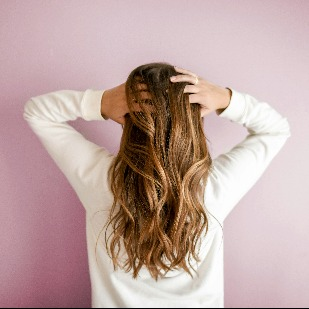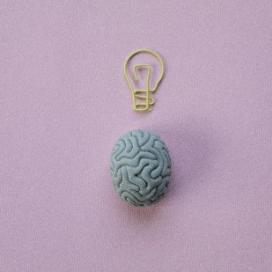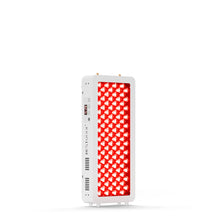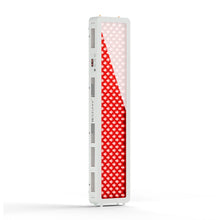What Is Rosacea?
All people experience blushing, whether it's because of a sunburn, an allergic reaction, or stress. But if the redness lasts for a long time, it may be a skin condition called rosacea. Rosacea is an inflammatory chronic skin disease that affects the blood vessels and sebaceous glands of the face Rosacea is more common in fair-skinned adults aged 20-50, particularly women..1 In recent years, the incidence of rosacea has been increasing. It is reported that rosacea affects about 10% of the population.

What Causes Rosacea?
The etiology of rosacea is not clear. Studies have found neurological, cardiovascular, endocrine, and gastrointestinal comorbidities are associated with it.
If you already have rosacea, the following factors may trigger symptoms:
- Spicy food
- Alcohol
- Stress
- Cold or hot weather
- Sunscreen or cosmetics
- Exercise or hot baths
- Certain medications
What Are the Symptoms of Rosacea?
- Rosacea primarily affects the face and scalp and often worsens over time. At first, it occurs in the center of the face, especially the sides and tip of the nose, the cheeks, between the eyebrows, and the chin.
- If rosacea progresses, the skin becomes red and swollen with time, and small blood vessels are visible under the epidermis. Persistent erythema and telangiectasia may occur.
- Outbreak of pimples.
- In the advanced stage, the skin around the nose thickens and looks red and swollen.
About 50% to 75% of people with rosacea also affect the eyes; symptoms include:
- Swelling of the eyelids or eyes
- Itching
- Redness
- Light sensitivity
- Blurred vision.
Because the disease is so pronounced, it often has a significant psychosocial impact on patients, leading to negative consequences on quality of life, such as anxiety, depression, low self-esteem, and reduced general well-being.
Treatment for Rosacea
Rosacea is challenging to cure, but it is controllable. Current treatments for rosacea include medications, photoelectric therapy, and a variety of combination therapies. The role of red light therapy in treating rosacea cannot be ignored. In 2015, the American Rosacea Society reached a consensus that phototherapy laser provides an essential treatment for refractory rosacea lesions. Nowadays, many people are unwilling to use drug treatment because they feel that the effect is too slow and the course of treatment is long. Red light therapy has several advantages: the cost is low, everyone can use it, and there are no side effects.
Role of Red Light Therapy in Calming Rosacea Symptoms
Red light therapy is based on photobiomodulation, using specific wavelengths of red and near-infrared (630-940nm) light to stimulate cell biological functions by naturally penetrating the skin. As we know, the skin is the largest organ of the body. Scientifically, red light is primarily absorbed by mitochondria, which are essential organelles for the human energy supply, so red light therapy has a wide range of applications in skin diseases.
Red light therapy cannot cure rosacea permanently, but it enhances healthy cellular functioning and improves the management of typical rosacea symptoms.
Let's understand how red light therapy reduces rosacea symptoms effectively.
Control Inflammation and Reduce Redness
Once the rosacea is triggered in the body, healing requires an active synchronized biological response to control it. Red light therapy increases the phagocytosis of white blood cells, which plays a pivotal role in improving the body's immune function and enhancing the body's defense ability. During the early and middle stages of inflammation, the serotonin content of local tissues decreases, which can cause itchiness and pain in the face. Red light irradiation acts as an analgesia by increasing the serotonin content in the blood.
A 2022 study conducted in a mouse model of rosacea showed,
"Photobiomodulation reduced neutrophil infiltration, and levels of pro-inflammatory molecules, and lower rosacea erythema score".2

Other research studies in the Journal of Clinical Aesthetics Dermatology reported:
"Low-level light therapy inhibited the excessive proliferation of skin sebaceous gland cells and soothes redness, swelling, and irritation, which are all common symptoms of rosacea. It also normalized hair follicle sebaceous hyperkeratosis (non-cancerous skin growth) and prevented itching by suppressing the skin's outermost layer thickening".3
Smoothen Skin Texture and Scarring
When the wavelength of red light reaches the skin affected by rosacea, the skin cells absorb it directly with increased circulation. This brings more healing nutrients and oxygen to the exposed area, speeding up healing. Red light induces the production of new collagen, which in turn promotes the tissue repair process. It also increases the content of matrix metalloproteinase inhibitor 2, inhibits matrix metalloproteinase activity, protects newly synthesized collagen from its degradation, and improves post-acne scarring and skin texture. Red light exposure is also suitable for reducing inflammatory and cystic acne and shrinking skin pores.4 According to Dr. Michael Hamblin, an associate professor at Harvard Medical School, red light with a wavelength of 660 nm has the best biological response. It can be absorbed by the skin faster and boost collagen to increase skin repair.
Prevent Skin Infections
Repairing the skin barrier is the basis for treating rosacea. Red light therapy with low-intensity rays repairs the skin barrier and relieves discomfort due to dryness, tightness, itchiness, etc. Although, the photoactivation effect of red light on porphyrin is weaker than blue light's. But due to red light's stronger tissue penetration ability acts directly on the sebaceous glands or deeper skin layers to eliminate acne-causing bacteria, Propionibacterium acnes (P. acnes)5, through an anti-inflammatory mechanism.
Accelerates the regeneration of damaged nerves
Vascular changes and inflammation in rosacea cause painful sensations like burning, stinging, and itching, linked with hypersensitivity and excessive nerve stimulation. Red light therapy promotes the growth of damaged peripheral nerves and the formation of nerve myelin, thereby accelerating the regeneration of damaged nerves and calming irritation.
Conclusion
In summary, rosacea is a multifaced chronic disease, but patients can relieve their symptoms, improve quality of life, and minimize drug adverse reactions with red light therapy. It is non-invasive and does not burn the skin, so the risks are minimal, and there is no need for hospitalization. Red light therapy LEDs are the best at-home scar treatment because of their ability to fade skin blemishes in the shortest amount of time. Additionally, therapy does not cause pain. However, in rare cases, treatment of an area, such as an active rash, may not be recommended. Red light reduces redness, pimple scars, inflammation, and other conditions. According to the severity of rosacea and the duration of therapy time, results may vary among different individuals. Generally, results can be seen anytime from 24 hours to 8 weeks. If you have rosacea, experience the Bestqool facial red light therapy devices committed to elevating your health and wellness.
References and Citations
[1] Shrma, A., Krompouzos, G., Kasir, M., Galdari, H., Goren, A., Grabe, S., & Goldust, M. (2022). Rosacea management comprehensive review. Journal of cosmetic derma, 21(5), 1895–1904.
[2] Wu, S., Si, Y., Wang, L., Sun, B., & Jiang, X. (2022). The effects of photobiomodulation on inflammatory mediators, immune infiltration, and angiogenesis in a mouse rosacea model. Annals of translational medicine, 10(15), 831.
[3] Ablon G. (2018). Phototherapy with LEDs: Treating a Broad Range of Medical and Aesthetic Conditions in Dermatology. The Journal of clinical aesthetic dermatology, 11(2), 21–27.
[4] Sorbelini, E., Di Padova, M. P., & Rnaldi, F. (2020). Coupled blue and red LED therapy efficacy in patients with rosacea: 2 case reports. Journal of Med Case Reports, 14(1), 22.
[5] Hussein-El Ahmed, H., & Steinhof, M. (2021). Laser and light based therapies in management of rosacea systematic review. Lasers in medical science, 36(6), 1151–1160.











 Small
Small

 Moderate
Moderate

 Moderate
Moderate

 Moderate
Moderate

 Full
Full



